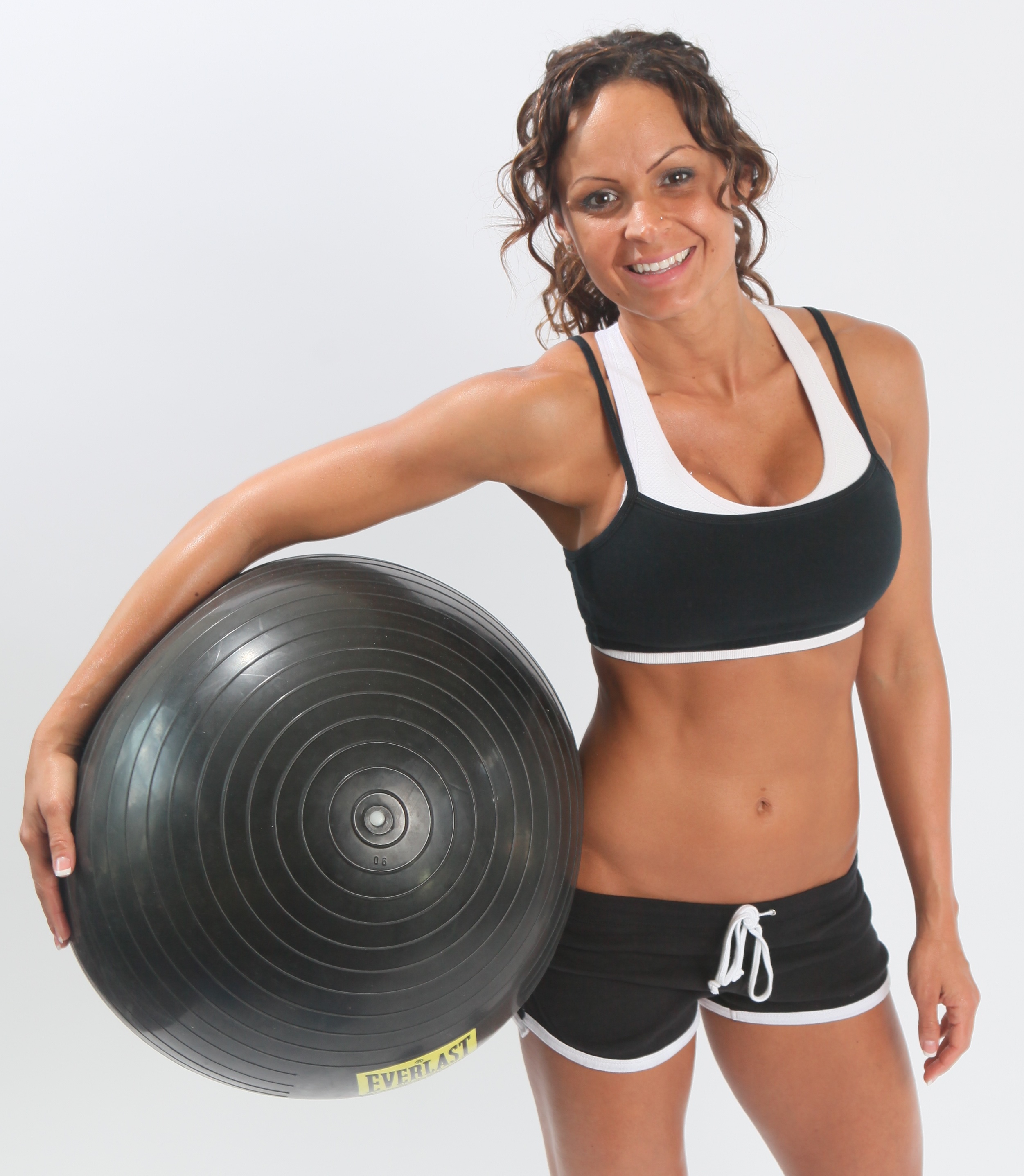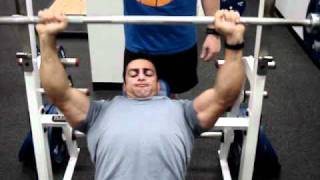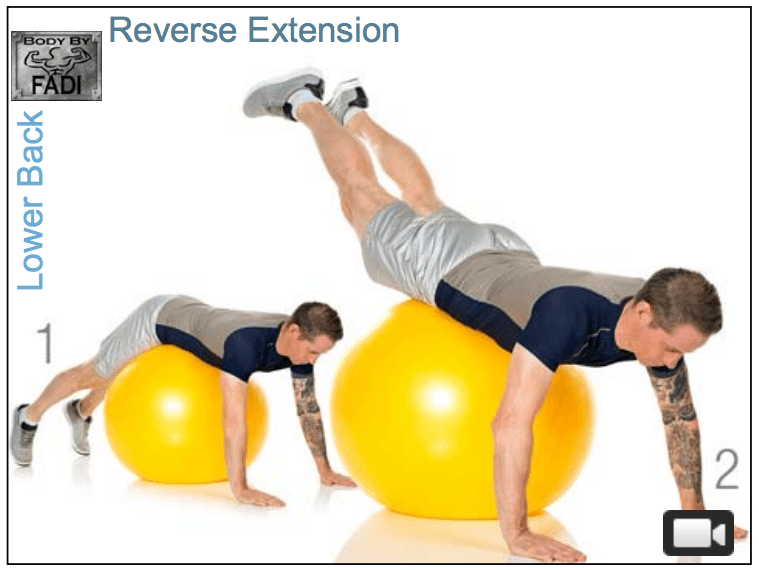
by Body By Fadi Guest Blogger | Aug 12, 2015 | Body By Fadi, Buckhead Personal Trainer, Exercise, Fadi Malouf, Fitness, Virtual Trainer, Weight Loss
Pyramid Workout: Legs
We started with a pyramid workout for chest and back, and now we are graduating to the legs.
Just like with the chest and back exercises, with each exercise below, you will start with 10 reps and then decrease to nine reps, followed by eight, seven, six, all the way to one. Once you get to one rep, you’ll increase all the way back to ten, stacking the reps on top of one another.
As you decrease your reps, you’ll increase your weight. You should be at the heaviest weight, truly challenging yourself on reps 1-4.
- Focus: Hamstrings, Quads, and Glutes
- Time: 1 hour
- Warm Up: Five minutes of cardio
Here are the three exercises to focus on for the legs:
Dead Lifts
- Equipment: Dumbbells
- Reps: Pyramid (10,9,8,7,6,5,4,3,2,1,1,2,3,4,5,6,7,8,9,10)
- Weight: Females: up to 35 lbs.; Males: up to 50 lbs.
- Tips & Tricks: Keep a slight bend in the knees as you lower the weights just below the shins.
Hamstring Curls
- Equipment: Leg Machine
- Reps: Pyramid (10,9,8,7,6,5,4,3,2,1,1,2,3,4,5,6,7,8,9,10)
- Weight: Females: up to 35 lbs.; Males: up to 50 lbs.
- Tips & Tricks: Keep your back straight and focus on one leg at a time
Step Ups
- Equipment: Bench (or stair)
- Reps: (10,9,8,7,6,5,4,3,2,1,1,2,3,4,5,6,7,8,9,10)
- Weight: Females: up to 35 lbs.; Males: up to 50 lbs.
- Tips & Tricks: Focus on the glute muscle; do not lock the knees as you step up one leg at a time

by Body By Fadi Guest Blogger | Jul 22, 2015 | Atlanta Personal Trainer, Blog, Body By Fadi, Buckhead Personal Trainer, contact Body By Fadi, Exercise, Fadi Malouf, Fitness, Health, Motivation, Virtual Trainer, Weight Loss
The medicine ball, the exercise ball, and the bench are widely used pieces of equipment because there is a variety of exercises you can do with them to work any part of the body. Whether you consider yourself a workout beginner, or if you’ve been hitting the gym for decades, these items are must haves in your “workout closet.”
Today we’re focusing on a laundry list of exercises that work different parts of the body, while keeping you on your toes – literally. This workout only includes one set of exercises that you’ll perform two times through.
Note that many of these exercises involve sitting on an exercise ball. Sit on this type of ball with both feet firmly placed on the floor, hip-width apart or wider. Keep your back straight and your head aligned with your spine. Maintain this position on the ball throughout each exercise.]
Focus: Biceps, Triceps, Shoulders, Glutes, Core
Time: 45 minutes
Warm Up: Five minutes of cardio
Set (repeated two times)
Toe Taps
- Equipment: Medicine Ball
- Reps: 50 per set
- Tips & Tricks: Focus on tapping the top of the ball with the bottom of the foot to keep the ball in place
Bicep Curls
- Equipment: Exercise Ball; Dumbbells
- Reps: 25 per set
- Weight: Start with 15 lbs. or more; increase weight by 10 lbs. one the second set
- Tips & Tricks: Keep the back straight, bend the arms to meet the shoulders and straighten completely with each repetition
Shoulder Press
- Equipment: Exercise Ball; Dumbbells
- Reps: 25 per set
- Weight: Start with 15 lbs. or more; increase weight by 10 lbs. one the second set
- Tips & Tricks: Keep the back straight; on each repetition, bring arms perpendicular to shoulders (but not lower) before pressing up
Overhead Tricep Extensions
- Equipment: Exercise Ball; Dumbbells
- Reps: 25 per set
- Weight: Start with 15 lbs. or more; increase weight by 10 lbs. one the second set
- Tips & Tricks: Hold a dumbbell with both hands wrapped around the dumbbell handle; keep elbows pointing forward and straight, but not locked
Shoulder Raises
- Equipment: Exercise Ball; Dumbbells
- Reps: 20 per set
- Weight: Start with a manageable weight for the first set; increase weight by 5 lbs. on the second set
- Tips & Tricks: Keep the arms straight out to your sides as you slowly lift and lower the weights (do not lift more than a foot up)
Full Sit Ups With Ball
- Equipment: Exercise Ball
- Reps: 20 per set
- Tips & Tricks: Lie flat on your back; bend the knees and place the legs over the ball; extend arms to touch the toes as you roll up
Fire Hydrants
- Equipment: Bench
- Reps: 20 per side
- Tips & Tricks: Position yourself on your hands and knees on the bench; lift one leg straight out to the side and back down, keeping the knee bent; do not allow the leg to extend past the hip
Side Leg Kicks
- Equipment: Bench
- Reps: 20 per side
- Tips & Tricks: Position yourself on your hands and knees on the bench; lift on leg straight out to the side and kick forward, keeping the leg straight
Back Leg Kicks
- Equipment: Bench
- Reps: 20 per side
- Tips & Tricks: Position yourself on your hands and knees on the bench; kick one leg straight out behind you and slowly bring forward
Backwards Lunges with Press
- Equipment: Dumbbells
- Reps: 25 per set
- Tips & Tricks: Lunge backwards while simultaneously pressing upwards; be sure to keep the back knee two inches off the floor as you lunge
This is a great workout to focus on your arms and the glutes, and finish with an exercise that puts focus on both.
Looking for more? Want to get access to over 6,000 workouts like this? Book an appointment with Body By Fadi today and discover what all the program has to offer.

by Body By Fadi Guest Blogger | Jul 13, 2015 | Atlanta Personal Trainer, Blog, Buckhead Personal Trainer, contact Body By Fadi, Exercise, Fadi Malouf, Fitness
Welcome to Body by Fadi’s workout of the day, where we will give you the tools you need to complete a strategic workout with tips and tricks along the way to help you succeed!
Today, we’re focusing on chest and back supersets. A superset is where you perform two or more exercises back-to-back without rest. You can perform a superset that focuses o
n the same body part, or opposing body parts – such as chest and back.
A chest and back superset is effective because most chest exercises are pushing movements and most back exercises are pulling movements. So the muscles are alternately resting and working, which allows both muscles to work longer and increases effectiveness.
Check out the superset workout below!
Focus: Chest and Back
Time: 30 minutes
Superset 1
4 Sets
Barbell Chest Press, Walking Lunges, Standing Trunk Rotation, Lateral Pulldown with Squat
Barbell Chest Press
- Equipment: Pulley Machine
- Reps: 20, 20, 15, 10
- Weight: Start with a manageable weight for the first 20 reps; increase weight by 5-10 lbs. after each set
- Tips & Tricks: Keep elbows in line with the wrists; focus on isolating your pectoral muscles as you push upwards
Walking Lunges
- Equipment: Free weights
- Reps: 30 lunges per set
- Weight: Start with a set of dumbbells at a manageable weight; increase weight by 5-10 lbs. after each set
- Tips & Tricks: Hold the weights straight down next to your sides; make sure that your knees do not extend over your ankles as you lunge
Standing Trunk Rotation
- Equipment: Cable (grasp the handle with both hands, arms fully extended)
- Reps: 15 per side, per rep
- Weight: Start with a manageable weight for the first set; increase weight by 5-10 lbs. after each set
- Tips & Tricks: Keep your eyes focused on the handle and your hips locked forward as you rotate
Lateral Pulldown in Squat Position
- Equipment: Pulley Machine
- Reps: 15 per set
- Weight: Start with a manageable weight for the first set; increase weight by 5-10 lbs. after each set
- Tips & Tricks: Keep the arms and back straight; focus on isolating your lateral muscles as you pull down
Superset 2
3 Sets
Incline Receptacle Chest Press, Squat Row, Single Leg Lunges, Vertical Chest Press
Incline Receptacle Chest Press
- Equipment Bench; free weights
- Reps: 15 per arm, per set
- Weight: Start with a manageable weight for the first set; increase weight by 5-10 lbs. after each set
- Tips & Tricks: Keep wrists in line with elbows and elbows in line with shoulders; slowly straighten and lower one arm at a time
Squat Row
- Equipment Pulley Machine
- Reps: 20 per set
- Weight: Start with a manageable weight for the first set; increase weight by 5-10 lbs. after each set
- Tips & Tricks: Stand back until you have enough resistance on the cable; make sure thighs are parallel to the ground
Single Leg Lunges
- Equipment Bench
- Reps: 15 per set
- Weight: None
- Tips & Tricks: Due to the angle of the exercise; it’s okay for your knees to extend over your ankles when performing the lunge; focus your eyes straight ahead – this will keep your back straight
Vertical Chest Press
- Equipment Bench
- Reps: 15 per set
- Weight: Start with a manageable weight for the first set; increase weight by 5-10 lbs after each set
- Tips & Tricks: Isolate the inner pectoral muscles as you pull your arms to center
That’s it for today’s workout! Be on the lookout for more weekly workouts. Want to get access to more workouts like this? How about over 6,000 workouts? Book an appointment with Body By Fadi today and discover what all the program has to offer.

by JayBird | May 13, 2014 | Blog, Health, News, Nutrition, Sports, Wellness

- Asthma
What Is Asthma?
Asthma is a chronic lung disease characterized by inflammation and spasm of the airways. Causing breathing problems such as coughing, wheezing and shortness of breath. Asthma can be triggered by environmental factors, infections, allergies, exercise, temperature changes or other airway irritants. By properly managing asthma, however, such as avoiding being exposed to triggers, taking prescribed medications, looking for warning signs and knowing what to do during an asthma attack, an individual with asthma can have a healthy and active lifestyle.
Sulfites and sulfiting agents in foods (found in dried fruits, prepared potatoes, wine, bottled lemon or lime juice, and shrimp), and diagnosed food allergens (such as milk, eggs, peanuts, tree nuts, soy, wheat, fish, and shellfish) have been found to trigger asthma. Many food ingredients such as food dyes and colors, food preservatives like BHA and BHT, monosodium glutamate, aspartame, and nitrite, have not been conclusively linked to asthma.
learn about food sensitivity by clicking here
Know what is in your food.
The best way to avoid food-induced asthma is to eliminate or avoid the offending food or food ingredient from the diet or the environment. Reading ingredient information on food labels and knowing where food triggers of asthma found to be the best defenses against a food-induced asthma attack.
The Thirty Year Rise In Asthma.
Asthma has risen in the United States during the past thirty years, which leads doctors to believe that our changing diets could be the cause of this. As the general population eat fewer and fewer fruits and vegetables and more processed foods. Also it has many wondering if it possible that we’re greatly increasing our risk of developing asthma. Studies have suggested this, and others are ongoing.
A recent study of asthma and diet showed that teens with poor nutrition were more likely to have asthma symptoms. Those who didn’t get enough fruits and foods with vitamins C and E and omega-3 fatty acids were the most likely to have poor lung function. A study done back in 2007 showed that children who grew up eating a Mediterranean diet — high in nuts and fruits like grapes, apples, and tomatoes — were less likely to have asthma-like symptoms.
Foods to Help Asthma:
Apples; Studies suggest that those who ate two to five apples a week had a thirty-two percent lower risk of asthma then those who ate less
Vitamin C: A strong antioxidant that may fight off lung damage. Citrus fruits are highest in Vitamin C fruits like Cantaloupe Oranges, Grapefruit, Kiwi. And vegetables like Broccoli, Brussels sprouts,and Tomatoes.
Beta Carotene: Which is converted to Vitamin A may help reduce the incidences of asthma . Foods like carrots and other vibrant colored fruits and veggies like apricots, green peppers, and sweet potatoes.
Coffee/ Black Tea: Although it seems every story leads with some bad news about health effects of caffeine.With regards to asthma, at least, caffeine is emerging as a good guy. It is a broncodilater that may improve air flow.
Avocado: Avocados contain an antioxidant called glutathione, Their role in the body is to protect cells against the damage done by free radicals.
Flax seed: Very high in Omega 3 fatty acids and magnesium. Since magnesium helps relax the muscles surrounding the bronchi, the airways, and keeps them open.
Garlic: This excellent anti-inflammatory contains allicin, an extremely powerful antioxidant
Foods to avoid:
Studies have shown these following foods are best avoided since they can promote asthma attacks.Though foods like milk can be have good and bad effects on asthma. Those with an allergy to milk can cause wheezing coughing and other repository symptoms. However it is high in vitamin D which may ease the symptoms of asthma
Red wine: may trigger asthma attacks, possibly due to the presence of sulfites (also found in dried fruit and shrimp).
Other studies suggest it might be the alcohol itself .
Peanuts: A study found kids with asthma who also had a peanut allergy, develop asthma earlier than kids without a peanut allergy. Also more likely to be hospitalized and more likely to need steroids.They seem to also have allergies to grass, weeds, cats, dust mites and tree pollen, all of which can trigger asthma attacks.
Salt: The number one aspect of asthma is inflammation and tightening of the airways, and salt can contribute to inflammation by causing fluid retention
Shellfish: The number three most common food allergy is shellfish. It can happen in children and adults. Beware also of hidden shellfish products and of cross contamination. Unlike egg allergies, shellfish allergies usually stay with you your whole life.
Celebrities who can relate:
The following athletes and entertainers never let asthma stop them from being the best; Tom Dolan, Kurt Grote, Nancy Hogshead, Jim “Catfish” Hunter, Miguel Indurain, Jackie Joyner-Kersee, Greg Louganis, George Murray, Robert Muzzio, Dennis Rodman, Mark Spitz, Alberto Salazar, Kristi Yamaguchi, Tim Allen, Loni Anderson, Jason Alexander, Alice Cooper, Morgan Fairchild, Bob Hope, Billy Joel, Diane Keaton, Liza Minelli, Martin Scorsese, Paul Sorvino, Sharon Stone, Elizabeth Taylor, Orson Welles.
Our fitness professionals will help you with various exercises and nutritional guidance to give you a healthy, happy, and active lifestyle,

by Fadi Malouf | Apr 30, 2014 | Atlanta Personal Trainer, Body By Fadi, Buckhead Personal Trainer, Exercise, Fadi Malouf, Fitness, Health

CLICK ON IMAGE TO WATCH
Reverse Extension on Swiss Ball
Try the Reverse Extension on a Swiss Ball as a great way to strengthen and improve your stabilizing muscles. This exercise focuses on the Erector Spinal muscles of the lower back as well as the Gluteus Maximus.
Using the ball keeps your upper body stable and provides support to the lumbar region as you lower and raise your legs, placing less stress on the lower back.
It’s only necessary to come up to a straight body position at the top of the movement, and not to hyperextend the trunk.
Exercise Instructions:
1 – Lie face down with your chest on the ball, your hands and feet on the floor
2 – Raise your legs up behind straight, making a line from your feet to shoulders.
3 – Do not bounce up and down on the ball as you perform each rep.
4 – Have fun!







